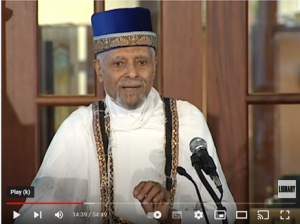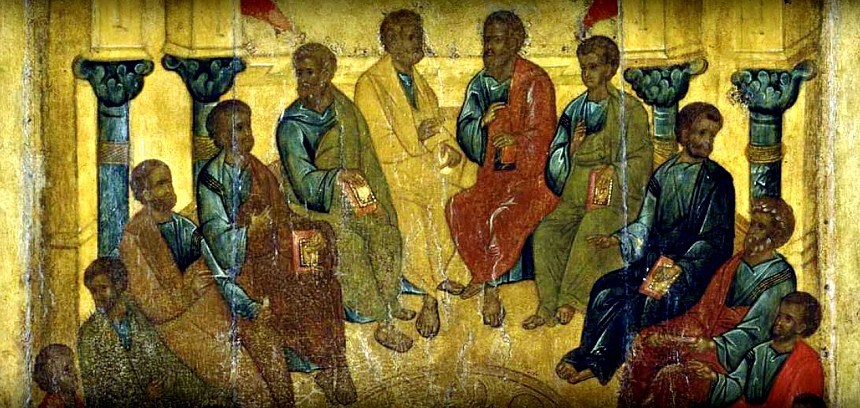
Who were the original Christian's?
For most people when they think of Christianity, they often think only in terms of Christianity in the western world and western Christianity's influence over the rest of known Christian world.
To most people therefore the only Christianity that exists is western Christianity, not only in our modern times, but in all ages.
From this point of view it is then easily deduced and concluded that Europeans are the only custodians of Christianity and that the Religion and faith is purely a Western conception and invention, often referred to as a European, Western or even a White mans religion.
It is fully understood by most that the Religion itself, was born in the east, and out of eastern culture, and was first practiced by people from the east. Notwithstanding, the fact that the Bible itself clearly shows that the first Christian's were all Jewish or proselytes (eastern converts to Judaism), who converted in their hundreds and thousands, before this religion, even left the shores of Judea.
Nevertheless, these facts are seldom included into people's modern idea's and notion's about the Christian faith and religion. Although, these facts are fully recognized, for most people, these original ethnic Jewish and eastern people, were only the founders or forerunners of the faith and this was in Biblical times only. But have since fell away or into total obscurity. This is assumed to have happened immediately after the destruction of the Jewish Temple in 70 AD. Most people therefore conclude that ever since this time, these ethnic Jews and proselytes, have had no further direct influence upon the faith and its development, after the 1st century.
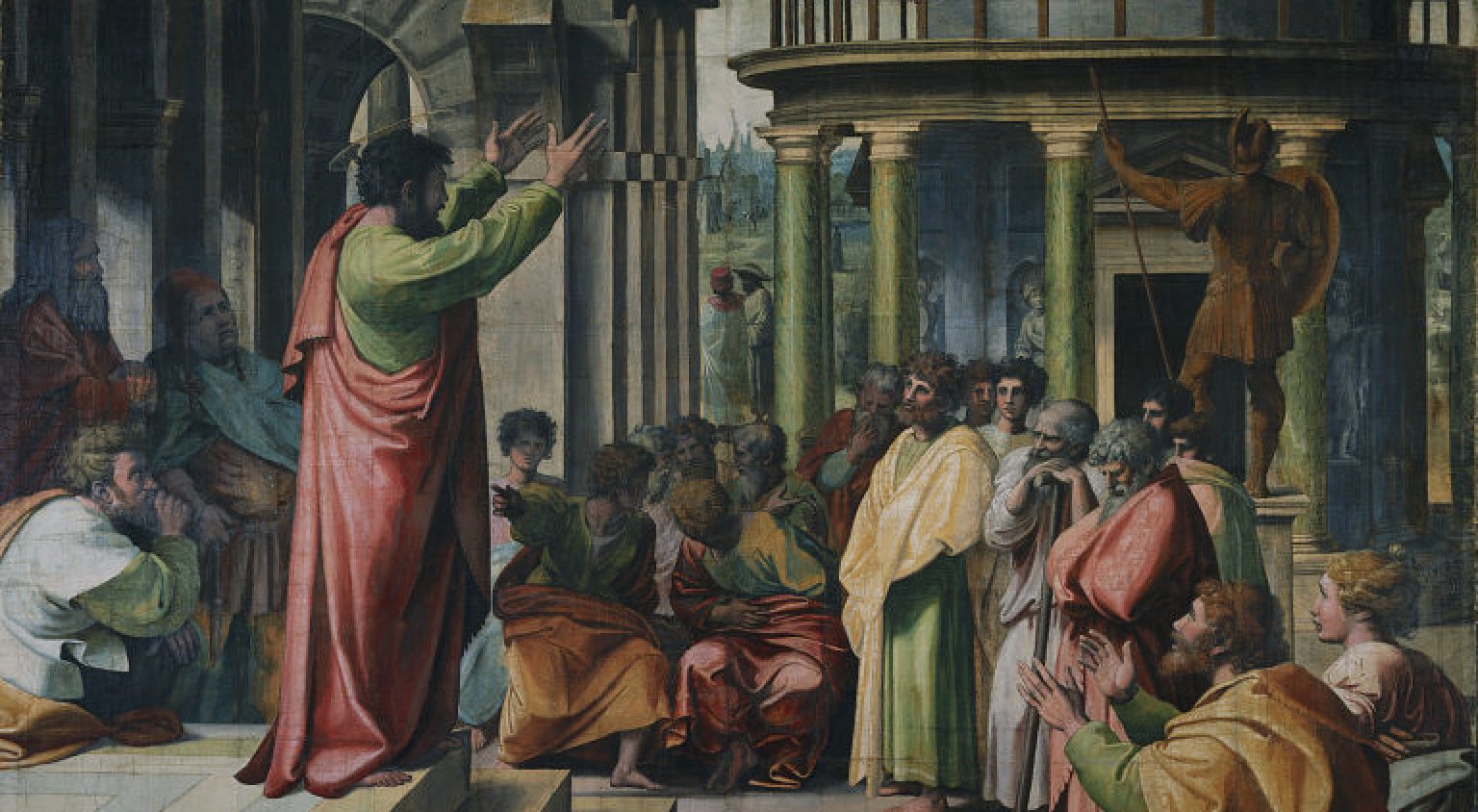
The Influence of Pauls upon the Christian world
St Paul of Tarsus, to the Gentiles
However, this is only part of the story and provides only a very narrow minded view of how Christianity first spread.
The fact that the conversion of possibly thousands of eastern people to the Christian faith, even before Pauls conversion, including Jews and Proselytes, should also be of interest and must also be assessed, for us to see the full picture, to get a better understanding of how Christianity originally spread into the world, over the first few centuries. It is therefore equally important to take note of the evangelical work of first Yahshuah himself, his esteemed 12 Disciples and the other 69 plus apostles, other than Paul, commissioned by this twelve, to preach the Go-Spell, which is seldom drawn upon, or even known, when considering this spreading of early Christianity.
Nevertheless, for most still, this complete focus upon Paul's activities, seems to form their modern idea's of the development and growth of the early Christian faith, church and tradition. This is possibly further affirmed for them, due to the Bible's own focus upon Paul's travels and his letters.
We however, do not subscribe to this popular modern notion that Christianity was spread mostly by Paul, or as a consequence of his specific evangelism the faith became westernised, therefore the Europeans (gentiles) became the natural custodians of this faith, although this is even insinuated, in the Holy Bible itself.
We maintain this is very far from truth, but in fact is actually contrary to all the evidence and facts, found in the Bible, historically or what the evidence today suggests. No to the contrary, we affirm that although we do hold that there is such a thing as Western or European Christianity, this does not represent the entire Christian body, or faithful.
How did Christianity originally spread outside of Judea?
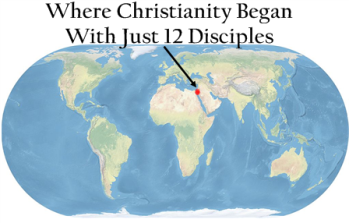
Examining the Roots of Christianity
Let us now analyse and assess objectively, this modern notion that Christianity is a product of western civilisation.
To do so we must first go back to the very beginning, to see exactly how this modern faith known to the world as Christianity originally developed. To follow the development of the Christian faith and traditions we must follow it back to its roots and origin.
This can be done quickly and quite easily and can serve as a platform from which to analyse the development of the faith through the centuries. The Christian faith obviously begins with Yahshuah himself, his ministry, crucifixion and resurrection, all of which took place in Judea and in the East.
During Yahshuah's ministry we are informed that He ministered to and converted many thousands of Jewish people to His faith, from across Judea. Yahshuah also had Twelve Disciples, who he instructed to; Go out and preach His Gospel to their fellow Jews, which they did. However after His Crucifixion and Resurrection, but before His Ascent, He also informed his Disciples to go out into the whole world to preach His Gospel. This they also did and continued to do so throughout the narrative of the New Testament.
Nevertheless after a few years had transpired, about 30 years after His Ascent and this focused Jewish evangelism, by the 12 Deciples, and by then many of the 70 apostles, Yahshuah then appeared to Saul, who latter became St Paul and instructed him to go specifically to the Gentiles, which he also did. His travels and ordeals are what forms the greater part of the New Testament narrative, due to his many letters, called epistles, such as Galatians, 1 Corinthians, 2 Corinthians, Romans, Philemon, Philippians, 1 Thessalonians, to name but a few.
The Early Evangelism by the first Christians.
Here is a list of the ministry and travels of St Paul alongside the travels of Yahshuah's 12 Disciples. Some of these travels are noted in the New Testament, whilst others are not mentioned within the Bible. Nevertheless, those not mentioned in the bible can be traced through the Christian records from the first two centuries. It is upon these Christian tradition that the Orthodox Apostolic Tradition is based.
St Paul
From and through Asia Minor to Greece and finally Rome, passing through major cities such as;
1. Jerusalem;
Visited before he became Christian and on his 2nd, 3rd & 4th Journey's
2. Caesarea;
Visited before he became Christian and on his 1st, 2nd, 3rd & 4th Journey's
3. Tyre;
Visited on his 3rd Journey
4. Sidon;
Visited on his 4th Journey
5. Damascus;
Visited before he became Christian
6. Antioch;
Visited before he became Christian on his 1st, 2nd & 3rd Journey's
7. Ephesus;
Visited on his 2nd & 3rd Journey's
8. Athens;
Visited on his 2nd Journey
9. Corinth;
Visited on his 2nd & 3rd Journey's
10. Thessalonica;
Visited on his 2nd & 3rd Journey's
11. Philippi;
Visited on his 2nd & 3rd Journey's
12. Rome;
Visited on his 4th & 5th Journey's
The Disciples
Throughout the Middle East to Europe and the West as far as Spain and to the east as far as India.
1. St Peter;
Journeyed throughout Judea, Asia Minor & to the city of Rome,
2. St Matthew;
Journeyed throughout Judea, Asia Minor, Ethiopia & Parthia
3. St James Son of Zebedee;
Journeyed throughout Judea, Asia Minor & Spain
4. St John brother of James and son of Zebedee;
Journeyed throughout Judea & Asia Minor
5. St Simon the Zealot;
Journeyed to Egypt, Macedonia & Parthia
6. St James Alphaeus;
Journeyed throughout Judea & Egypt
7. St Batholomew;
Journeyed to Armenia & India
8. St Thomas;
Journeyed to Parthia & India
9. St Jude Thaddaeus/Judas son of James;
Journeyed to Parthia & Assyria
10. St Andrew;
Journeyed to Asia Minor & Greece
11. St Philip;
Journeyed to Asia Minor (He had also Baptized the Ethiopian Eunuch)
12. St Mattias replacing Judas;
His travels are not featured in map
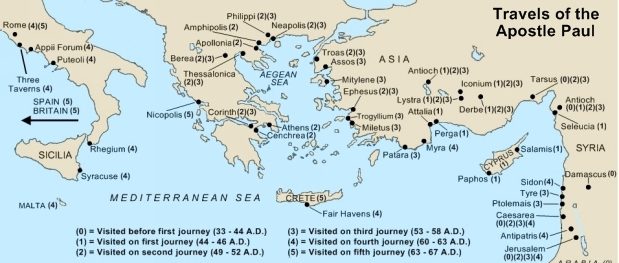
From Yahshuah to his Disciples to the Apostles to the world
From this basis the Christian faith first developed, independently in the East & West, due specifically to Peter & Paul's evangelism in the West to Gentiles, together with Peter alongside all the other Disciples & Apostles evangelism in the East, or to Jews in the West specifically.
This is demonstrated in the above map, featuring St Paul's possible travels throughout Asia Minor, to Greece and then to Rome, some of which is substantiated in the New Testament and the map below, highlighting the possible travels of the 11 Disciples, according to early Christian Tradition.
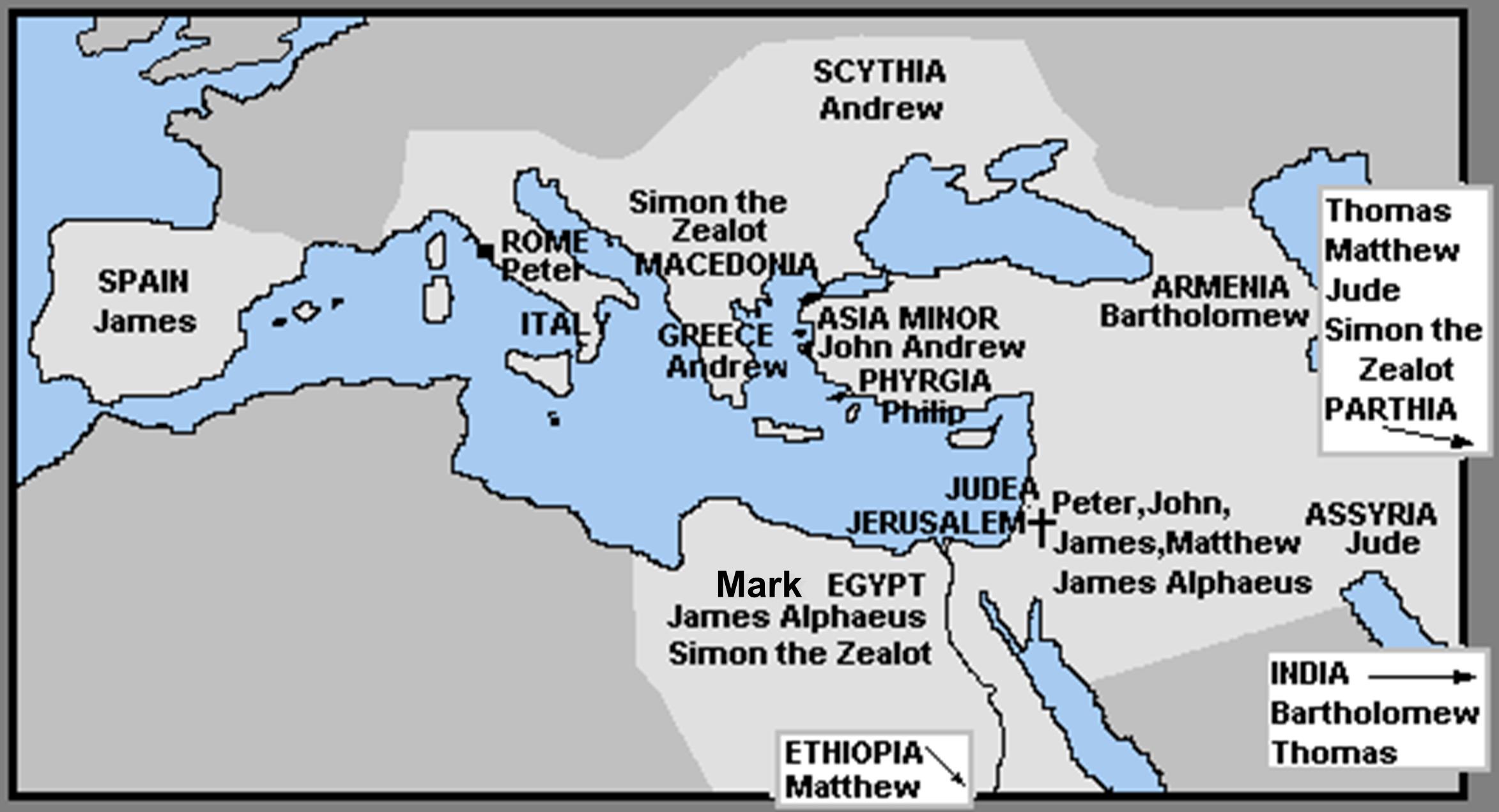
The Big Question seldom Asked?
As can be seen by the above map's and list's, within the 1st century of Christianity, the faith had spread as far in Europe as Spain and as far in the East as India. This was mainly owing and due to the many Jewish communities that were then scattered throughout the Roman Empire, for whom this ministry was first assigned.
We also see that in Europe the evangelism of Europeans, was mostly done by St Paul & St Peter. This is very important to note, as whilst we are fully aware of St Paul's & St Peter's travels, as a lot of this is recorded in the Bible, the journey's and evangelism of the 11 Disciples, is less known. Nevertheless although very little of their travels is recorded in the Bible, this evangelism in the East by the Disciples, is well documented and authenticated in the Christian tradition and in recorded history. With this understanding, knowledge and awareness, the question that therefore needs to be asked, although never even considered by modern people is;
What happened to all those thousands of people in the East, Jews, Proselytes and non-Jews, who had converted to the Christian faith, during and most probably directly proceeding the 1st century AD?
Who and where were the first Christian's?
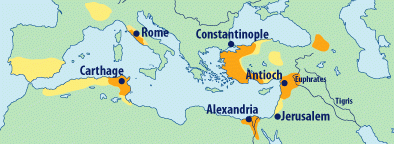
The Earliest Christians, the facts
Now based upon the above facts and evidence, it should be fully understood that within the first two centuries of the development of Christianity, the vast majority of people, who were practicing Christian's that vast majority of them were either Jewish, Proselytes, Non-Jews but also non-European. This is also further confirmed by both the first cities in the world that had a majority of Christian citizens, as well as the first countries that adopted Christianity as there state religion.
This included cities such as Jerusalem, Alexandria, Carthage Antioch (East) and Rome (West), prominent centres of Christianity in the 1st, 2nd & 3rd centuries, with Armenia (301 AD), Ethiopia (320) and Rome (380) respectively, being the earliest attested Christian states in the 4th century.
It is therefore from these ancient cities and countries that Christianity developed and spread into the wider world, during the first four centuries.
What is also very important to know and understand is that for the first four centuries, this Christian faith that had reached far outside and beyond the boarders of Jerusalem, to many important influential cities and countries, had developed totally independently and quite uniquely, within the boarders of these diverse communities and cultures, up until the gathering of the first international Christian's Council at Nicaea in 325 AD.

